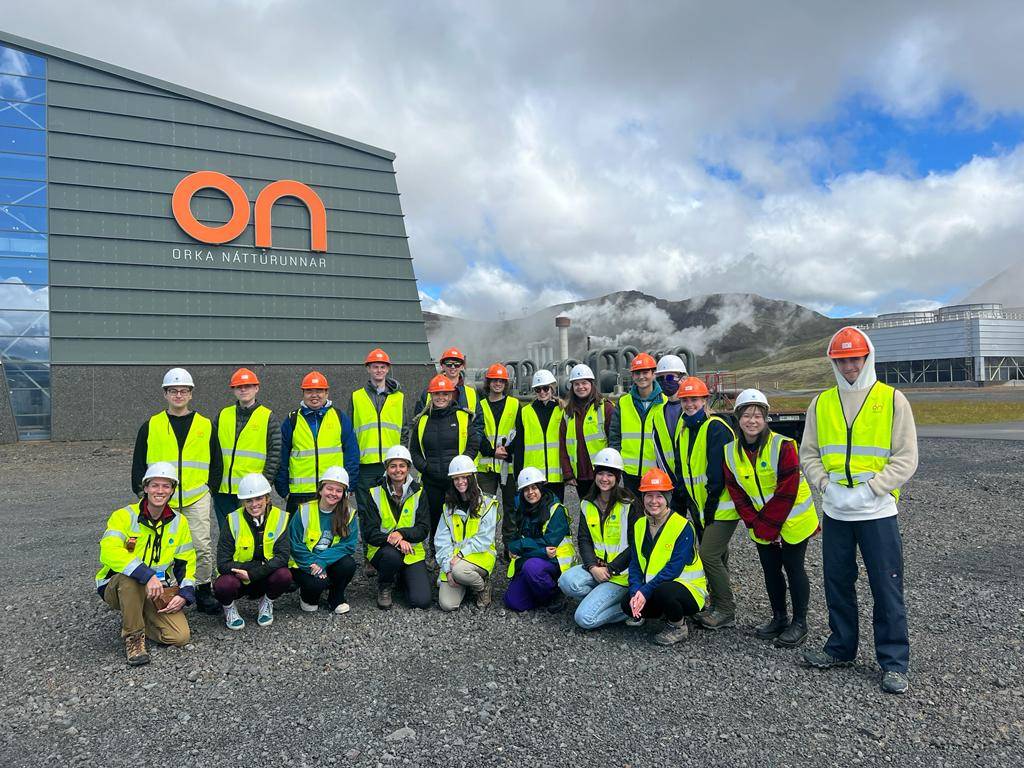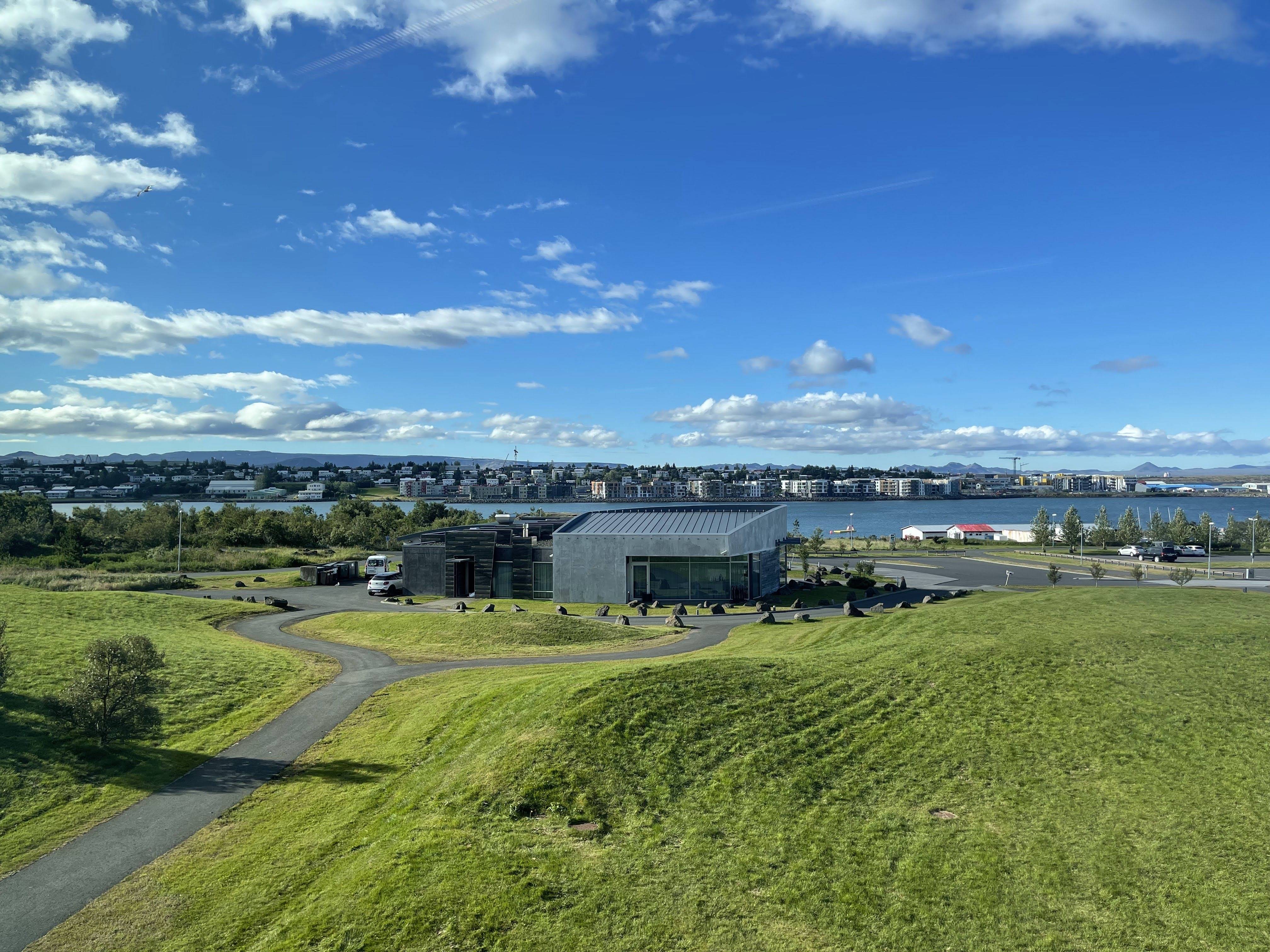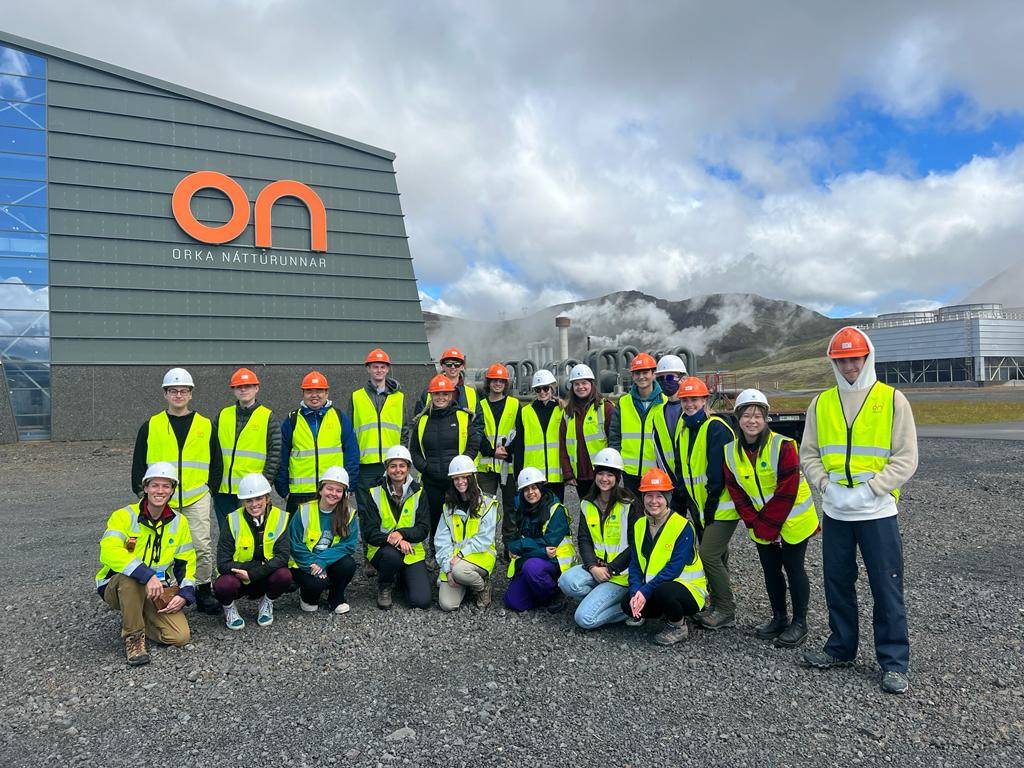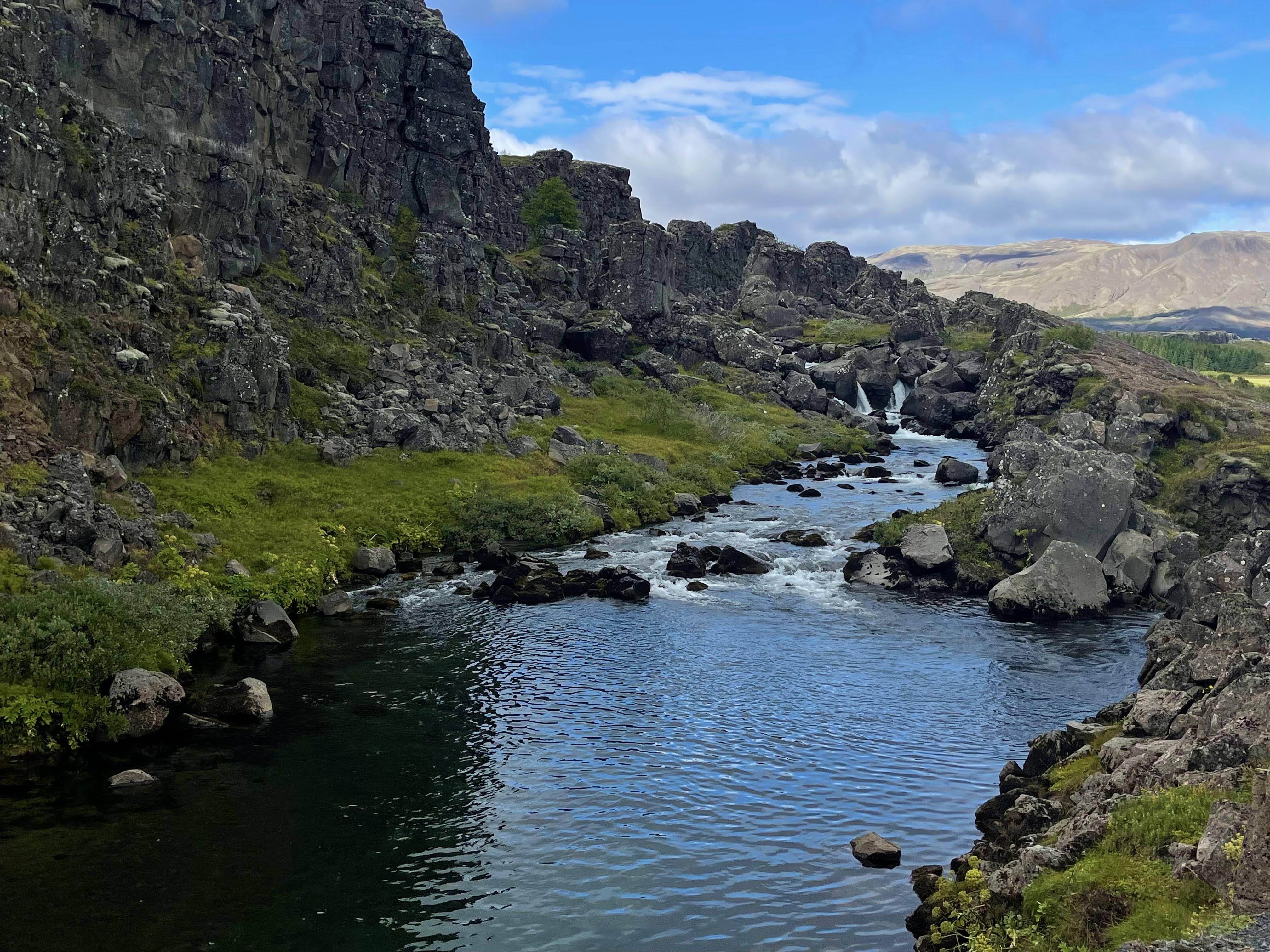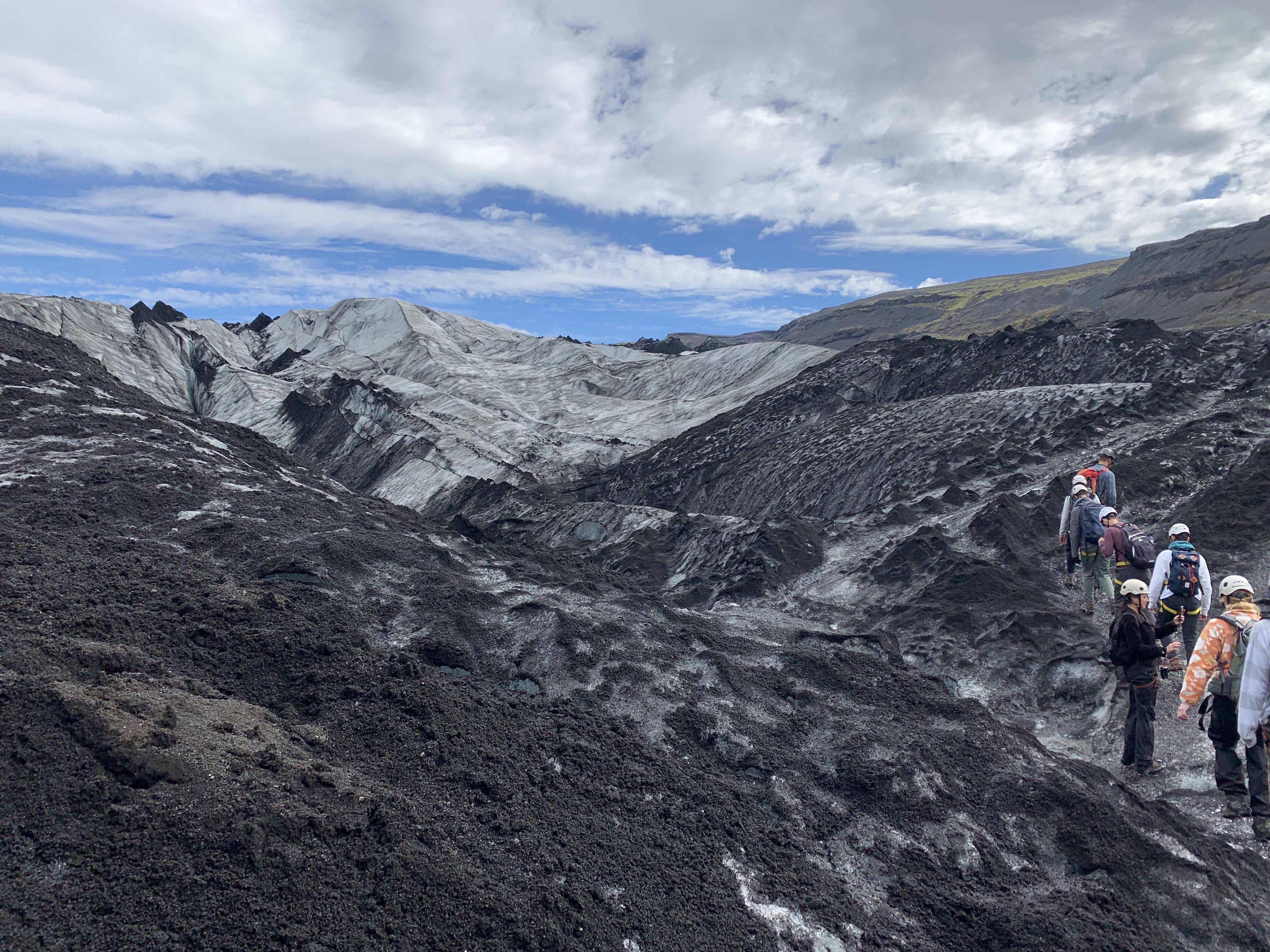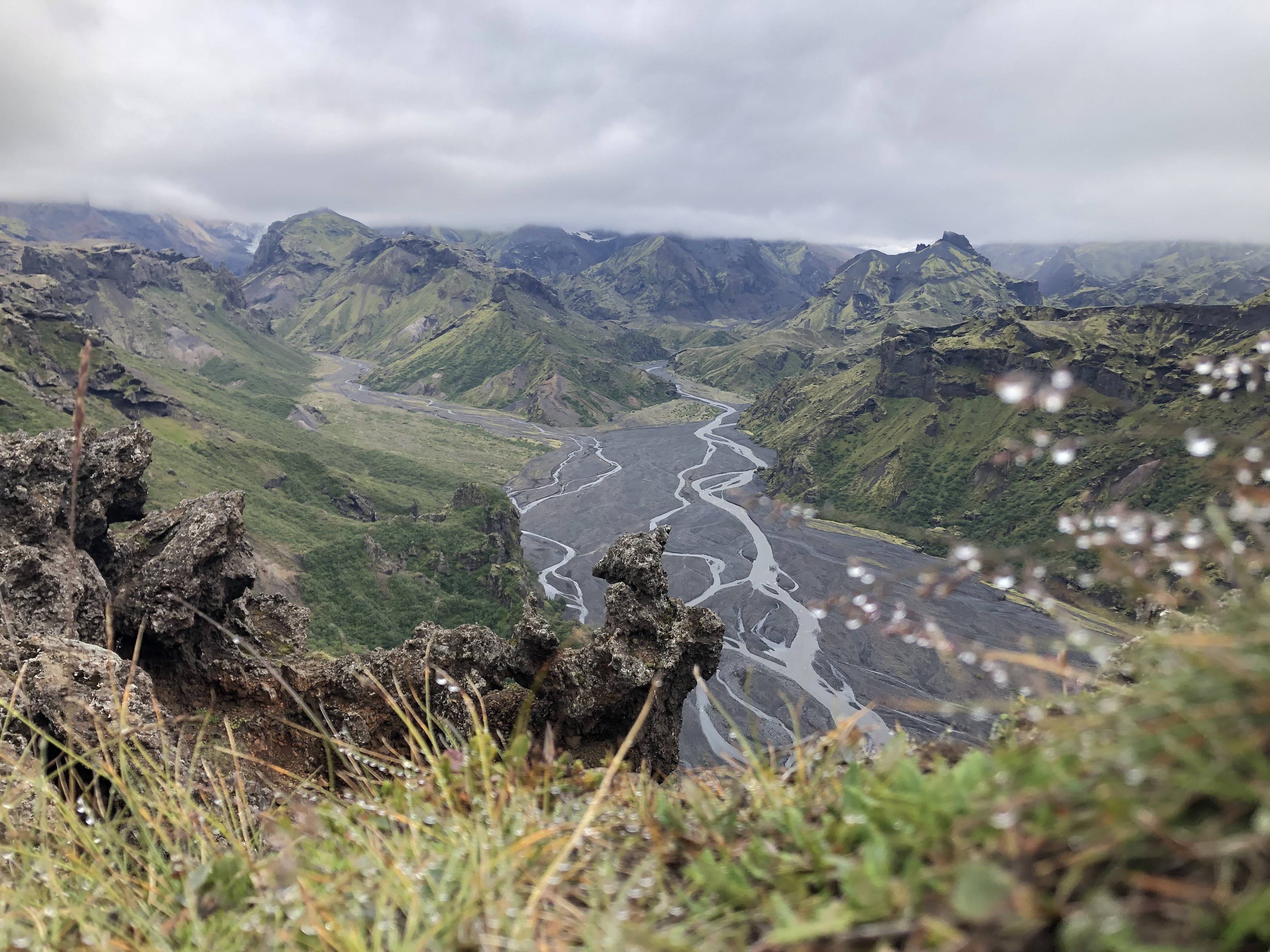I used my AMS grant funds to take part in a short abroad program in Reykjavik, Iceland, sponsored by The GREEN Program. The GREEN Program offers a variety of abroad programs focused on experiential learning and professional development, with curriculum based on the United Nations sustainable development goals. On this program we learned about renewable energy and sustainable development in Iceland. Over the course of nine days, we took classes focused on renewable energy, immersed ourselves in Icelandic culture, participated in a variety of outdoor adventures, and developed a final capstone presentation.
We spent two of our nine days at the Reykjavik University, taking classes with professors at the Iceland School of Energy on topics such as the history of energy in Iceland, geothermal energy, hydroelectric power, and energy policy. These classes were supplemented with visits to local power plants, such as the Hellisheiði Geothermal Power Station, which supplies a substantial portion of Reykjavik’s electricity and hot water. At Hellisheiði, they also have a project with the company Carbfix, working to capture atmospheric carbon and inject it deep underground. While geothermal energy is renewable, there are still some emissions associated with the process, so projects like the one with Carbfix represent some of the innovative ways Iceland is working to reduce its carbon footprint from energy production.
However, we learned that even Iceland’s renewable energy infrastructure has many complexities, and their practices are far from perfect. For example, since their energy is generated from renewables and is relatively cheap, it is a widespread practice in Iceland to leave radiators on all day and to cool off houses by opening windows rather than turning down heat. This may seem wasteful, but the reality is that Iceland has a surplus of energy production, at least as far as its citizens are concerned. The geothermal plant we visited produces enough electricity to power somewhere in the range of 250,000 homes. In a country of 350,000, that is a considerable amount of the nation’s total energy demand, and this geothermal plant is one of five in Iceland (though it is the biggest).
Iceland is in a unique situation because they can tap into vast amounts of renewable energy through geothermal and hydropower, but they have a small population. To bridge this gap between energy supply and demand, the government started bringing in heavy industry such as aluminum smelters in the late 1960s. These smelters use up most of the energy produced in Iceland, and while they run off Iceland’s renewable energy resources, the processes involved with aluminum smelting release greenhouse gasses.
Understanding these complexities in Iceland’s energy system is incredibly important, because while Iceland boasts that it runs on 100% renewable energy, there is still progress to be made in reducing emissions and becoming more sustainable. As a result of these smelters — and other factors, such as the widespread use of gas-powered cars for transportation — Icelanders technically emit the most greenhouse gasses per capita in all of Europe.
Aside from learning about the energy system in Iceland and their unique geography and geology, we learned a lot about Icelandic culture. The program housed us in two different hostels, both of which were family run and operated, and both of which provided us with homemade Icelandic meals. During the course of the program, we also learned about holiday traditions, Icelandic music, their education system, their language, and tricks for getting through the long, dark, snowy winters.
Lastly, and perhaps my favorite, was the adventure component of the program. Some of the outings included hiking to a famous thermal river to take a swim; seeing some of Iceland’s most famous waterfalls, geysers, and black-sand beaches; and traveling to Thingvellir National Park, the meeting place of Iceland’s first parliament in 930 AD. The park also rests on the boundary between the Eurasian and North American plates and was a shooting location for Game of Thrones. We also did a one-day glacier hike and a full-day hike through the Icelandic highlands, ending with a night of camping in the Valley of Thor (Thorsmork).
The program finally concluded with an entrepreneurial capstone project. The criteria for the project were that it had to address at least one of the UN’s sustainable development goals, incorporate renewable energy, and have a sensible business model. I ended up working in a group with a business student, a landscape architecture student, a high school graduate planning to major in chemical engineering, and an environmental engineering student. As a biology student myself, we offered a wide variety of academic perspectives. Our project was a proposal to repurpose old Olympic facilities and stadiums as sites for renewable energy development and community engagement and to build future facilities more sustainably based on the principles of circular economies, with long-term plans in mind for the facilities after the games had ended.
All things considered, the trip provided me with an education and an experience that I will never forget. I got to meet and interact with students, guides, and professors from all over the world, connecting, collaborating, and learning about sustainability in one of the most naturally stunning places on the planet.
